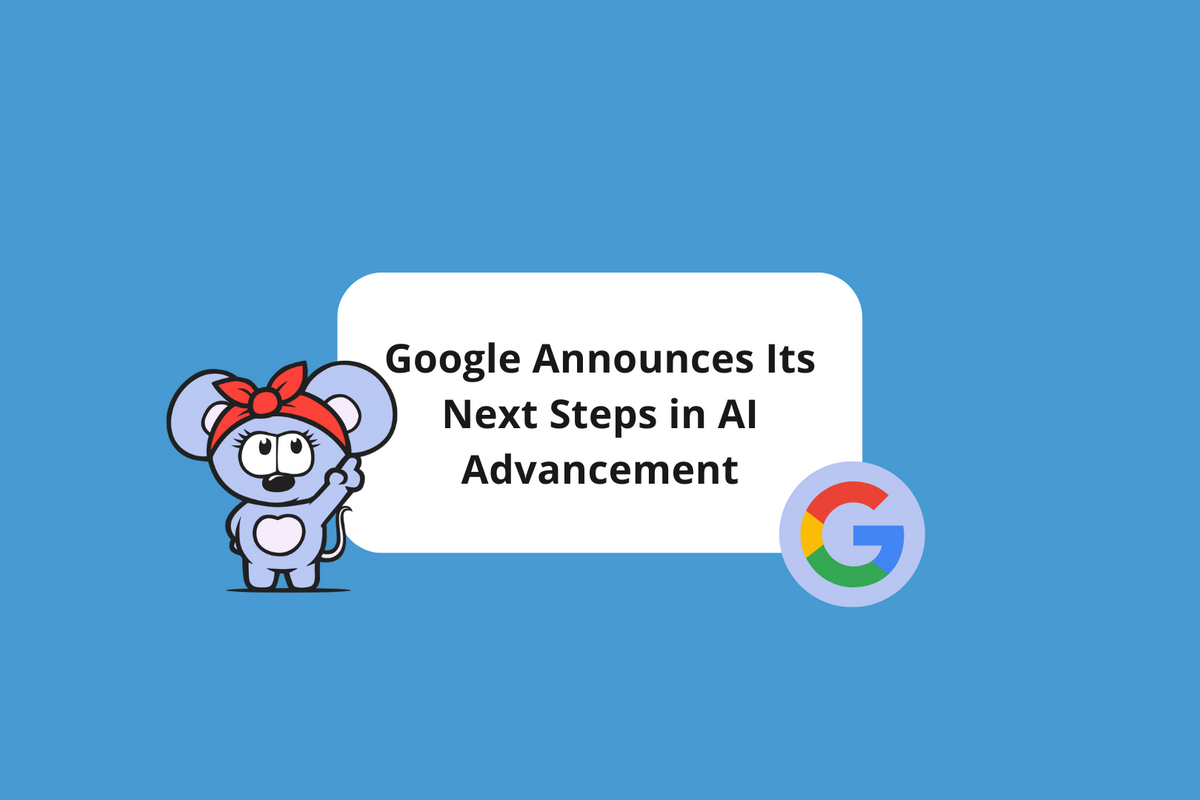
The race to conquer the AI space continues with major developments from Google
Everywhere you turn there’s news about how AI technology is going to change the world. The explosion of AI-enabled text editors like ChatGPT, and AI-empowered image generators like Stable Diffusion, have disrupted the tech industry, and now it’s Google's chance to turn on the heat.
The advancement of platforms like ChatGPT pose a threat to Google’s dominance as the top player in the search industry. Because of this, Google reportedly declared a “ code red ” situation and began to massively accelerate its own AI efforts shortly after ChatGPT launched in December 2022.
Fast forward to February 8, 2023, when Google hosted a “ Live from Paris ” event to share their “latest updates in our long-running efforts to make searching more natural and intuitive.” Here’s a brief summary of what they announced.
\u201cToday in Paris, we shared the latest updates in our long-running efforts to make searching more natural and intuitive, including multisearch now being available globally, a new way to search your screen, and how Bard and AI features in Search fit into our broader vision\u2026\u201d— Google SearchLiaison (@Google SearchLiaison) 1675887432
Visual Search
Google’s Lens feature already allows you to search from your camera roll directly into the search bar. In the coming months, Google plans to expand this with the ability to search what you see in photos, videos, messages, and video apps without leaving that app or experience.
Here’s an example use case from Google:
"Say your friend sends you a message with a video of them exploring Paris. If you want to learn more about the landmark you spot in the background, you can simply long-press the power or home button on your Android phone (which invokes your Google Assistant) and then tap “search screen.” Lens identifies it as Luxembourg Palace — and you can click to learn more.”
Google also launched multisearch, which allows users to search with a picture and text at the same time. You can also use multisearch on any image you see on the search results page on mobile.

Here are some examples of how to make the most of multisearch from Google :
- Screenshot a stylish orange dress and add the query “green” to find it in another color.
- Snap a photo of your dining set and add the query “coffee table” to find a matching table.
- Take a picture of your rosemary plant and add the query “care instructions.”
Click here to read more about how Google is using AI to enhance visual search.
Introducing Bard
During the Paris event, Google also launched Bard, which is an experimental conversational AI service powered by the company's Language Model for Dialogue Applications (LaMDA). According to Google, Bard seeks to bring together the breadth of the world's knowledge and the intelligence of large language models to provide high-quality responses to a wide range of queries. Like ChatGPT, it uses information from the web to provide fresh, accurate answers to questions.
Using AI for “Smarter” Search
AI can be used to provide insights for questions that do not have a singular definite answer. To emphasize this, Google Search will soon offer AI-powered features that simplify complex data and many different views into a comprehensible format. This will allow users to see the overall perspective on their particular query, and gain more knowledge from different perspectives.
Here’s an example from Google:
“When people think of Google, they often think of turning to us for quick factual answers, like “how many keys does a piano have?” But increasingly, people are turning to Google for deeper insights and understanding — like, “is the piano or guitar easier to learn, and how much practice does each need?” Learning about a topic like this can take a lot of effort to figure out what you really need to know, and people often want to explore a diverse range of opinions or perspectives."
Both Bard and the new AI search features are still in development. Click here to learn more.
How AI-Enhanced Content Ranks on Search
Since AI content creation tools are making a splash on the web in record time, Google used its Paris event to reinforce their stance on AI-enabled content and how it’s crawled for search.
The use of automation, including AI, to create content with the primary goal of manipulating search engine rankings is a breach of Google's anti-spam policies. However, not all uses of automation, such as AI generation, is considered spam. AI can create useful content, like weather forecasts, sports scores, and transcripts.
Google’s overall stance on AI is no surprise if you have been following Google for a while — it all comes down to content quality. No matter the method of content production, those who want to be successful alongside Google Search should focus on creating original, high-quality content that follows the principles of E-E-A-T (experience, expertise, authoritativeness, trustworthiness) .
Click here to read more about Google’s guidance on AI-generated content.
Publish With AI the Right Way
The explosion of AI technology in recent months is on track to disrupt the entire web, and that includes the publishing space. RebelMouse is an enterprise CMS that’s leading the race to bring AI to the CMS experience in a smart and savvy way that makes writers and editors smarter, faster, and better. We believe that AI can be used not to replace humans, but to enhance what content creators can do.
RebelMouse has already integrated with OpenAI and Stable Diffusion to give editors the power of smart image creation for any story, as well as to help with taxonomy, give editorial suggestions for alternate headlines, discover smart search phrases, and summarize curated content quickly. Click here to learn more.
Get in touch today so that we can start working together.















































































